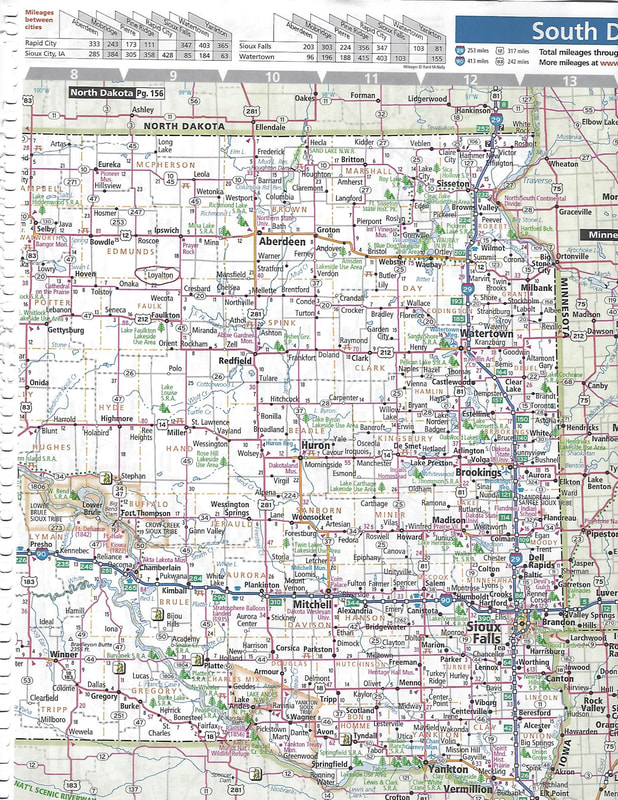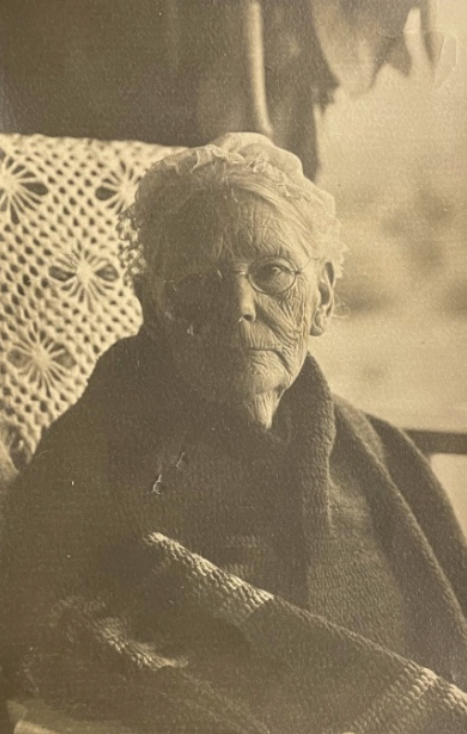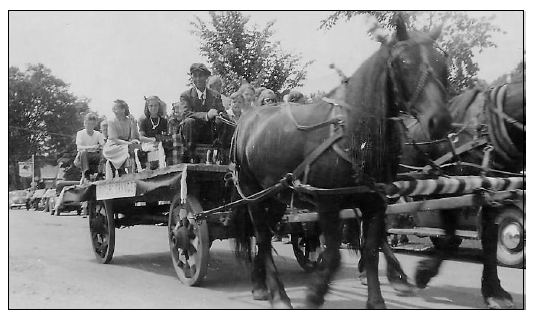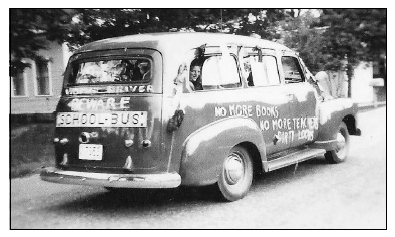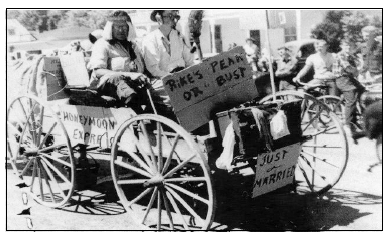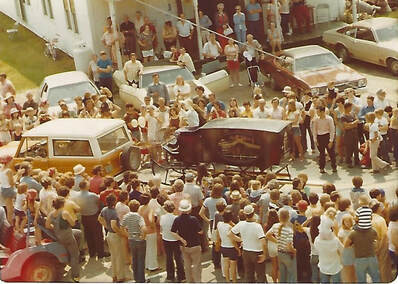|
On May 25, 1885 ten men from Worcester joined sixty-six others from central Vermont headed out west by train to seek a new beginning by founding a colony in the Dakota Territory. There has always existed a desire among Americans of any era to seek a better life, a greener pasture, and most often the eyes of the seeker turned westward. Worcester resident and Civil War veteran, L. M. Hutchinson, (who lived with his wife and three children in the Cliff Mullen place) became a leading advocate of the endeavor. He served as a member of the “Vermont colony” location committee which had earlier selected a section of land in Edmunds County, not far from present day Ipswich, South Dakota. Those men from Worcester who were aboard the first train to the new settlement were L. M. Hutchinson, Saul Cameron, Henry Hunt, Eugene Templeton, J. W. Brown, Frank King, George Lovell, Harvey Willey and son, and Will Ward.
The Vermont Watchman published reports from Hutchinson who appeared to be acting as the general agent, recruiting new settlers from Vermont. We arrived at Loyalton May 31, with nothing but shelter tents to protect us from the storm. Some of the younger portion of the colony thought it a little rough, but the old soldiers could put up with it and smile. The weather was rather against us, for it was very rainy and wet nearly all of the week; but, notwithstanding the weather, the boys took hold with a will and began erecting homes on their claims and breaking the vast prairie. The most of them have broken up two or three acres of land and put in some potatoes and vegetables for winter use. You will see by the heading of my letter that the town is named Loyalton, which, I think, is very appropriate; the colony being composed mostly of old soldiers. The members of the colony are well pleased with the location. A very few have returned to Vermont, as might be expected from the number that came out, the colony numbering seventy-seven. We have started a town – have one store built, twenty-two by thirty-two feet, and another is ready to put up. Two other buildings have been put up, one being a stable, and several more dwellings will be erected this summer. It begins to look like business here, and I cannot see why the colony will not be a success. Crops are looking finely in the territory. Rain has been abundant and everything seems promising. Our town is twenty miles from Ipswich, the terminus of one branch of the Milwaukee and St. Paul railroad, eleven miles from Roscoe, with a railway survey right through town and a good surrounding country to back it up. The climate is very healthy, the atmosphere being bracing. All of the members of the colony are well. We held religious services today, there being some thirty-seven out to church. We now hold our meetings in a store, but the sturdy Vermonters will soon erect churches and school houses. Hutchinson returned to Worcester from the new settlement in July but was ready to take another group out in early November. He reports the colony well satisfied with their location and doing well. His report was very encouraging: When we arrived at Loyalton, I was surprised to see the progress that the colony had made during my absence. Most of them have raised vegetables enough for their use. Crops were fine, wheat averaging twenty-nine bushels to the acre and oats from fifty to sixty bushels on greensward. All of the colony are in fine spirits and well satisfied with the country, notwithstanding the weather has been unfavorable. The following is a list of the party from Worcester: L. M. Hutchinson, wife and three children, D. G. K. Hunt, Frank T. Hutchinson, Harry D. Hutchinson, and M. Templeton and wife. The colony has voted to bond the town to build a school-house, and are making preparations to put up a two story structuring this fall. There are already over thirty scholars in town. In spite of the good beginning, the village of Loyalton was too distant and the weather too severe for long-term success. The last report from Hutchinson followed the historical blizzard of January 12, 1888, when an unexpected storm swept across the prairies and claimed 235 lives, most of them children. The storm struck us about nine o’clock A.M. and it was one of the most severe storms that I have ever experienced. A person could not see objects ten feet away. The air was completely filled with snow, which was perfectly blinding. It was not safe for anyone to go ten feet from their dwelling. It was fortunate for us that it struck so early in the day, as our people had not left their homes. Edmunds county was very fortunate, for but one man was frozen to death in this county. The death rate has been greatly exaggerated in the East. The southern portion of the territory suffered a great deal more than the middle and northern portions, as the storm struck them later in the day. A great many lost their lives by carelessness. There were no lives lost here. The Colony is prospering and the people have comfortable homes to live in. The weather has been fine since the blizzard and the snow is pretty much off of the prairies, with the exception of some drifts. For the last ten days we have had warm, pleasant days like April weather in Vermont, and it makes us think of spring, although we expect to see more cold weather. Our winters here are shorter by far than they are East. Next month we shall be preparing our ground for wheat. We have a population here of some two hundred. We have two mails per day – one east and one south. Our township is the best settled township in Edmunds county, and we have plenty to eat and drink. Provisions are not so high here as they are East. Probably more vegetables were lost here last fall by being frost-bitten than were raised in Vermont. I see by eastern papers that people think that we are suffering for the comforts of life, but such is not the fact, for Dakota has plenty and a good deal to spare. There is no indication how the colony faired after this report, but by 1900 the village of Loyalton was a ghost town. Droughts, prairie fires, blizzards, illnesses and hardships overcame the Vermonters and most returned home. Interestingly enough, you will find the place identified on a current map of South Dakota. As for L. M. Hutchinson, at some point he returned to Worcester where he died January 16, 1910, and is buried in the Village Cemetery.
0 Comments
A month or so ago I posted a request on Front Porch Forum for any old pictures related to Worcester that folks might have in treasure boxes or photo albums. That inquiry led to several interesting adventures, including an unfruitful search of the attic of the Methodist Church in quest of a reported crate of old pictures, specifically looking for a picture showing one of the old water troughs for horses that used to be on Worcester's main street. Another venture yielded a rich and varied collection of dozens of Worcester-related photographs taken between 1877 and 1950. Pamela S. Barnett contacted me via social media and indicated she had in her possession a few old pictures of Worcester and Worcester citizens. She explained that her husband had Ordway, Ladd and Abbott families in his family tree. To this day, she has forwarded sixty incredible copies of photos, mainly from the 1920s, of 100+ years ago. With her permission, we will have the entire collection on display at the Worcester Historical Society this summer. She recently wondered if I was getting bored looking at these landscapes and people – because she has more. Pamela, please, please, please keep them coming until there are no more! To see buildings that are no longer standing and people who impacted our community who are long gone absolutely affirms our mission as an organization. Thank you so much for your amazing gift. I am sharing two photos from the Barnett collection below. Henry Abbott's store was located across from the Town Hall. Henry started working at the store when he was 16. He bought the store, probably in the 1890s, from Henry Douglas Vail, an early merchant. Abbott sold the store to T. Earl Doty in 1910, then joined him in partnership in 1916. The Abbott and Doty Store became a local institution, a community center. Henry Abbott died in 1933 and Mr. Doty continued operation of the store until 1945, when he sold it to Earl Maxham. This portrait of Carrie Templeton is iconic. Our "Cow book" (p. 150) relates that she was blind at 80 years and "washes her own dishes and likes to keep the family laughing over her reminiscences." She was one of those octogenarians whose long life got the attention of the Boston papers in the 1920s.
Most towns the size of Worcester cannot boast that they had an airport. Thanks to intrepid entrepreneur Earl Maxham, we had one. Earl's son, David, describes its origins. "In Earl’s early 50’s [ca 1943] he took flying lessons and became a private pilot. The next move was to develop an airstrip, purchase an airplane and, of course, start a new business venture. The airstrip was the combination of two parcels of continuous land to form an 1800 foot airstrip. It was located on Route 12 across from the Worcester cemetery. ..... Earl’s D-4 Cat bulldozer did the earth moving. A land grader and operator was hired to level the future grass sod runway. The final requirement was the construction and painting (orange with wide black stripes) of the runway identifier markers. There were two buildings associated with the new airstrip: A “T” hangar was built to house the 65 HP yellow and red two seat Aeronca Champ. The hangar construction plan came from a magazine article. ..... The second building was an aging chicken coop dragged, on site by a farm tractor. The chicken coop was jacked up, painted, and a large plate glass window was installed on the side facing the airstrip. ..... Outside the administration building entrance door an aviation gas tank was buried and a gas pump was set up. Beyond the pump on the grass, six dirt anchors with ropes were set in the ground. These anchors served as tie downs for visiting airplanes. Earl later acquired a second airplane. It was an aluminum clad Cessna model 140 with a 120 HP motor. The final step, after hiring airport manager/certified flight instructor, John Culver, was getting the necessary approvals to operate a flight school. The students included local WWII veterans, from neighboring communities, who learned to fly under the GI Bill of Rights program. The flight school was in operation for a several years."
There are people still living who remember going up in that plane. It even got some press in other parts of the country. "Walter M. Kearney, aviation editor of the Worcester Evening Gazette, Worcester, Mass., and Mrs. Kearney landed at the Maxham air strip Monday afternoon. Mr. Kearney plans to have the members of the Aviation club of Worcester, Mass., fly here in the near future to be served a country breakfast at the Town Hall." One day young David Maxham was surprised to see some workers at the mink farm pushing his Dad's airplane down Route 12 toward the airstrip. He learned that Earl had engine failure shortly after taking off and managed to land right behind Ginnie Humphreys in Ladd Field. Back at the airport, Earl Maxham primed the engine and took off again, as if nothing had happened. Its full potential, however, was never realized. The dirt air strip eventually disappeared under a hayfield and nothing remains of the hanger or administration building. Good bit of discussion about July 4th celebration in public forums recently. Worcester celebrated "Independence Day" long before the Historical Society or fireworks. Here is a description from 81 years ago, as recorded in the Montpelier Evening Argus, with snarky, quirky editorial comments in italics.
“In spite of the weather… What else is new? “… practically the entire population of the town… That would have been 396 souls, according to the census of 1940. “…gathered at the village to celebrate the 4th of July. The exercises went off with a bang and everybody enjoyed the day despite the rain. Rain or shine, we know how to party! “The parade, scheduled to be at 10:30, was held at noon. The color guard was probably late arriving. “Leading was Mrs. Betty Fielders mounted on a spirited horse and carrying the U. S. Flag, and Lonny Martin, mounted on another spirited horse. They were followed by a group of Grangers. [Worcester’s Grange sponsored the parade.] Then came the floats, the Grange decorated in yellow and white, carrying a member of the Grange; the 4-H "Hill Billies" and the "Vermont Helpers" in an evergreen decorated float with the boys displaying their hens and calves… What about the roosters and knees? “…and the girls demonstrating their cooking and sewing; after this came the Ladies Aid [a WW II organization] on an attractively decorated float in blue and white with Mrs. Laura Kellogg and Mrs. Mary Maxham busily engaged in spinning, and dressed in keeping with the ‘spinning days’ and the motto 'The church serves the world’ marking this float. A Victory float, [Remember, this is 1943] "United we Stand," decorated in red, white and blue… How original. “…and carrying small boys… No large boys were allowed? “…dressed to represent the different branches of the service was very attractive and timely. Then a very attractive float decorated in evergreen carrying tiny girls… Not just small, but tiny? “dressed in Red Cross costumes deserved special attention. They were so cute! “After this a group of attractive ponies and horses. No unattractive or spirited ponies and horses permitted. “Another feature was a march in the hall with the tiny Red Cross nurses participating. They really were so cute. “The judges found it very difficult to award the ribbon but after much thought gave first prize to the 4-H float, 2nd to Ladies Aid and 3rd to the Grange. Hey - what about the tiny nurses? They were overlooked. They must have been devastated! “First ribbon for mounts went to Katherine Bowen, second to Lucille Maxham and third to Ethel Persons and for the ‘horribles,’ Earl Lewis. Not very cute at all! "Following the parade… Probably at about 12:10 PM. “…a cafeteria dinner was served in the hall to about 200. After dinner Sicily's orchestra from Marshfield rendered a delightful program… No rock and roll? “and a service flag for our boys was dedicated. This part of the program was in charge of Rev. F. H. Cresey who then introduced the guest speaker, Ray Daniels, from Montpelier. No one left the building, and the children were quiet. “Then came the sports, consisting of tugs of war for boys and men, and girls and women; three legged races, running races and ball games. These sports finished the afternoon exercises. "At eight o'clock the orchestra gave an out-door concert after which the crowd assembled in the hall for the vaudeville show and amateur program. [All the vaudeville acts, which were mainly songs and skits, were listed with the names of the presenters. This blogger is getting tired of typing, so here he includes just those names:] Ida Welch, Ida Wheeler, Alberta Barney, Lanny Martin, Earl Day, Betty Fielder and Gyneth Hogaboom. If you want to know about what anyone did, check with this blogger by email ([email protected]) and he'll let you know.] “After these presentations, the amateurs took over. Why they are singled out as “amateurs?" [All the amateur acts, which were also mainly songs and skits, were listed with the names of the presenters.This blogger is getting even more tired of typing, so here he includes include just those names: Eldon Brown, two Marshfield girls, Ida Cooney, Barbara Cooney, Mrs. Hinckley, two girls from Shady Rill, Ida Welch, Eva Martin, Mervin Wells, Mrs. Raymond Utton, Wendall Billado yodeled, John Alden, Delma Story, Mrs. Fletcher and Earl Lewis.] Hoping to recoup from the “horribles,” no doubt. According to this vivid description of Worcester's 4th of July, 1943, prizes for all this talent were awarded as follows: "First prize, $2, Wendell Billado… This guy could really yodel! "Second prize, $1, Mrs. Hinckley, third prize 50 cents, Mervin Wells. But wait! That's not all. "After this the floor was cleared for dancing and the festivities closed with this social hour. It had to be after midnight! “Hot dogs and cola were served during the dance. Finally. A food vendor. “Between $80 and $90 were the receipts of the day." And, no doubt, there was hardly a peep to be heard the following morning because everyone slept in. A good time was had by all. The pung shown in this old postcard (circa 1920, Rockport, Massachusetts) is probably similar to the one featured in Harry Dodge's account below. As far as we know, no photo of his actual pung remains. Gene Sweetser's recent comments on the Worcester Connects Community Facebook page about the slide he and friends used to take on a bobsled from way up Minister Brook almost ending in the Village made me think of the incredible ride of Harry Dodge in the early 1920's from their family home at the top of Gould Hill. Here is his description of the long and dangerous ride as told to his grandson, Chris:
"It was a nice March afternoon. My father had just gone to work. He had said earlier that he wanted to get rid of that ol' pung (a one horse sleigh) that was sitting in the back of our home. My brother and I decided to take the pung for a small ride. We got dressed and dragged the pung to the top of the nearby field and took off the shafts (the part of the sleigh that connects the sleigh to the horse). We started to slide down the hill. "If we had planned our trip correctly we would cross the property of many of our neighbors. We wanted to end up in the low lands by the North Branch of the Winooski River. We had gone about one-half mile when we came upon a stone wall fence. The wall was covered with a few feet of snow. This was between the road we wanted to cross and us. Needless to say, we could not stop the sleigh so we had no choice but to jump the stone wall. I told my brother to duck his head and I did the same. "We crossed the wall and took off into the air like a bird. We touched down with a crash and kept going. We heard a ping noise and my brother asked me, 'What's that?' "I replied, 'That was the top strand of Richardson's barb-wire fence.' "We kept going and heard the noise again and knew that we had made it to Ladd's fence. "By this time we were on level ground and heading for another stone fence. Again we hit and landed ten feet up in a tree. The seat went over our heads and into another tree. We landed with the sleigh on the ground. That same minute the seat landed in front of us on the ground and split into many pieces. Luckily, we were not hurt. We got out of the mess and I said to my brother, 'Well, no problem in getting rid of that ol' pung.' We went home and stoked the fire." Prior to the 1880s, most community funerals and wakes were held in the home of the deceased. The coffin, available for purchase at Abbott and Doty General Merchandise, would be taken by wagon to the Village Cemetery for interment. In 1882, the citizens of Worcester approved at Town Meeting the purchase of a horse-drawn hearse.
Built by A.C. Chase of Northfield in his carriage factory on East Street, it was described in a newspaper article thusly: "This elegant conveyance was finely trimmed with heavy silver plating by Mr. Chase, ironing by A.O. Smith, turned work by A.F. Spaulding and painting by William R, Bean." Usually two black horses with black plumes in the harnesses drew the hearse, which featured glass on three sides so the coffin within could be viewed as the black draped and fringed conveyance passed by. When not in use, the hearse was stored in the shed at the south end of the Village Cemetery. Above the old hearse is pictured at the Bicentennial parade, but its ownership and location is currently unknown. Town records reveal no information about its possible sale. If anyone has knowledge of its whereabouts or information about its disposal, please call 802-223-5625 and ask for David. The Worcester Historical Society would like to bring it home. Happy holidays to one and all from WHS. One of the really neat things about history is the adventure of discovery. It's so cool to find something you didn't know existed.
For a number of years I wondered what the first village school looked like. I knew that before 1854, village students attended classes in what was called the Hunt School, located near the Old Tavern Farm about a mile north of the village. I also knew that School District #1 purchased a quarter acre lot in the village from David Poor in 1854. Local tradition is that upon the original school's demolition in 1893, portions of the school building erected on that lot were incorporated into the Robert Martin residence, owned at that time by Robert Bruce. What I did not know was what that building looked like. A couple of weeks ago I got a call from a Charlie Farrell from Milton. He was doing research on old one room school houses and wanted to come to Worcester see our collection. Fortunately, we have a pretty thorough display about those schools. During our visit, Mr. Farrell mentioned that he had a picture of one of our schools, which he had discovered at the Vermont Historical Society. Lo and behold, it turned out to be our original village schoolhouse! On the back of the picture is written, "Later moved across the street where Robert Bruce resides." If you recognize anyone, please let us know in the comments! Check out the fence. – J. David Book After The Cow That Tried to Swallow a Potato was published in 2017, quite a few folks with Worcester connections wrote the WHS about their own experiences and memories of our little hamlet. These stories have not been shared and need to be, because many of them clearly demonstrate the character of the place we call home. So from time to time, we will do so in this column.
This one is shared by Donna Smith Ryan of Bridgewater, MA, whose great grandparents, Edward and Etta Smith, lived on Hampshire Hill from 1910 to 1912. She writes, "The people of Worcester Village saved my family twice.” The first instance occurred when Worcester residents responded to a plea from Edward's brother, the Reverend George Smith, then pastor of the Worcester Methodist Church, to come to the aid of Edward and Etta, whose newborn son needed to move away from the damp, wood and coal smoke-filled atmosphere of Boston, where they then resided. Ms. Ryan explains, “Someone offered a job logging in the woods for a dollar a day. Someone else had a farmhouse to rent. Another offered a horse, and the generosities went on from there." Edward and Etta moved to Hampshire Hill in October 1910 and found a wonderful community on the hill and in the Village. From time to time, says Ms. Ryan, “someone left a small stove on the doorstep, or a bushel of apples, or a food basket. It was very humbling for them to be the recipients of such charity.” The newborn, their ninth child, grew stronger and flourished. The second rescue was a bit more dramatic. In April 1912, Edward, a man of small frame weighing only about 120 pounds, was working a log jam on the North Branch when he set the key log free. He was immediately tossed into the ice cold river and was pummeled by logs while men raced along the bank trying to save him. Despite attempts to reach him at a bridge, one of the rescuers only managed to touch his hand but could not grasp it. For more than 20 minutes, Edward Smith felt his life was over. Right before reaching the falls and rapids, however, the log he was gripping was swept into a quiet eddy and he was able to drag himself to the shallows where the men made a human chain down an embankment to get him out. One of the men, Everett Morse, took him to his home and stayed up all night with him, providing him with warm drinks, warm blankets, and hot bricks around him. Bruised and battered, but with no broken bones, Edward fully recovered. Ms. Ryan concludes her letter: "So, thank you for saving my family. Your kindnesses have never been forgotten." |
Archives
May 2024
|
Proudly powered by Weebly

